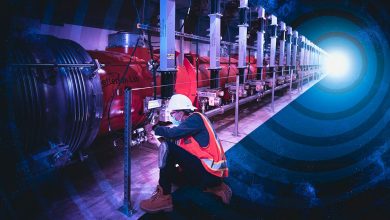
A major milestone has just been achieved in the quest for superconductivity! For the first time, physicists have achieved the resistance-free flow of an electrical current at room temperature. That’s 15 degrees Celsius or 59 degrees Fahrenheit. But hold your horses yet because the superconductor has one serious limitation: it survives only under extremely high pressures, approaching those at the centre of Earth. That means it will not have any immediate practical applications. Still, physicists hope it could pave the way for the development of zero-resistance materials that can function at lower pressures.
Discovering superconductivity
Superconductivity were first discovered in 1911 by Dutch physicist Heike Kamerlingh Onnes. He found that mercury becomes a superconductor when cooled to a few degrees above absolute zero (about -273 °C or -460 °F). He soon observed the phenomenon in other metals like tin and lead. and has since then become a really pursued goal in physics.
A few decades later, superconductivity was achieved only at extremely low temperatures. Then at the end of 1986 to the beginning of 1987, a group of researchers at IBM’s Zurich laboratory found that certain ceramic oxides can be superconductors at temperatures as high as 92 K—crucially, over the boiling temperature of liquid nitrogen, which is 77 K. This transformed the study of superconductivity, and its applications in things like hospital MRIs, because liquid nitrogen is cheap and easy to handle. (Liquid helium, though colder, is much more expensive.) The huge leap in the 1980s led to feverish speculation that room-temperature superconductivity might be possible. But that dream had proved elusive until the research being reported today.
How superconductivity is achieved
It consists of two main properties. The first is zero resistance. Usually, when electric current flows through a wire, it encounters some degree of resistance. For example, air resistance slows down a moving object. The higher the conductivity of a material, the less electrical resistance it has, and the current can flow more freely.
The second is something called the Meissner effect, in which the magnetic fields of the superconducting material are expelled. This forces the magnetic field lines to reroute around the material. If a small permanent magnet is placed above a superconducting material, the repulsive force of these magnetic field lines will cause it to levitate.
How they made it work
Superconductors are usually created and maintained only at really low temperatures which aren’t possible under normal circumstances. It’s also difficult and expensive to maintain these low temperatures which makes it a barrier for broader implementation. Then one fine day, physicists found success in raising the temperature in lightweight elements, such as hydrogen sulphide and lanthanum hydride. The main element here is hydrogen, the lightest element in nature. Unfortunately, Hydrogen is an insulator and a gas. It needs to be metallised using tremendous pressure.
“Because of the limits of low temperature, materials with such extraordinary properties have not quite transformed the world in the way that many might have imagined,” physicist Ranga Dias of the University of Rochester said in a press statement.
“However, our discovery will break down these barriers and open the door to many potential applications.”
“To have a high temperature superconductor, you want stronger bonds and light elements. Those are the two very basic criteria. Hydrogen is the lightest material, and the hydrogen bond is one of the strongest,” Dias said.
So while it’s expensive to achieve superconductivity at extreme low temperatures, it’s also expensive to achieve it at extreme high pressures. Fortunately, two teams have been successful in creating it in recent years.
In 2017, physicists created metallic hydrogen at pressures between 465 and 495 gigapascals and temperatures of 5.5 Kelvin (-267.65°Cs; -449.77°F). In 2019, physicists reported metallic hydrogen at pressures of 425 gigapascals and temperatures of 80 Kelvin (-193 °C; -316 °F). Neither of those are close to room temperature. And, for reference, the pressure at Earth’s core is between 330 and 360 gigapascals.
The next thing that can be used is a metal that’s rich in hydrogen, like the hydrogen sulphide and lanthanum hydride used in previous experiments. These mimic the superconducting properties of pure metallic hydrogen at much lower pressures.
So, a team of physicists led by Elliot Snider of the University of Rochester tried experimenting. First, they tried combining the hydrogen with yttrium to create yttrium superhydride. This material exhibited superconductivity at -11 degrees Celsius (12 degrees Fahrenheit) under 180 gigapascals of pressure.
Next, Snider and his team tried combining carbon, sulphur, and hydrogen to create carbonaceous sulphur hydride. They squeezed a tiny sample in a diamond anvil and measured it for superconductivity. And they found it, at 270 gigapascals, and 15 degrees Celsius.
Obviously, it’s still a way off being useable in everyday circumstances. The sample sizes were microscopic, between 25 and 35 microns, and the pressure at which superconductivity emerged still rather impractical.
The next step in the research will be to try to reduce the high pressure needed by tuning the chemical composition of the sample. If they can get the mix right, the researchers believe a room-temperature, ambient-pressure superconductor will finally be within our grasp.
Potential applications of superconductivity
The potential applications of superconductivity could revolutionise our world – from maglev transportation to data transfer to lossless power grids, etc.
Even though the physics behind superconductors is not fully understood, they are currently being used in several devices. Magnetic Resonance Imaging (MRI) is an example of one such device in use at vast number of hospitals. Superconductors in the MRI device are used to create a very large focused magnetic field. When the field penetrates a human body, it penetrates the nuclei of countless hydrogen atoms. Each hydrogen nuclei has its’ own spin and the field disrupts the spin creating a nuclear magnetic resonance (NMR) which is detected by the MRI device. This data is fed through a computer and translated into a graphical image. The movie on the right is an MRI taken of a 47 day old human embryo.
There are many potential uses for superconductors, each with a different application of the technology. Chip designers are attempting to integrate superconductive materials into microchips in order to reduce the resistance in the circuit. A reduction of resistance would cause a dramatic boost in computational speed. Projects are also underway to create high speed trains that hover above the track. Power companies would greatly benefit from the use of superconductors because a large percentage of the power supplied is lost in transit. Superconductors would nearly eliminate all of the lost power.
There are innumerable uses for superconductors, making them and invaluable resource.


